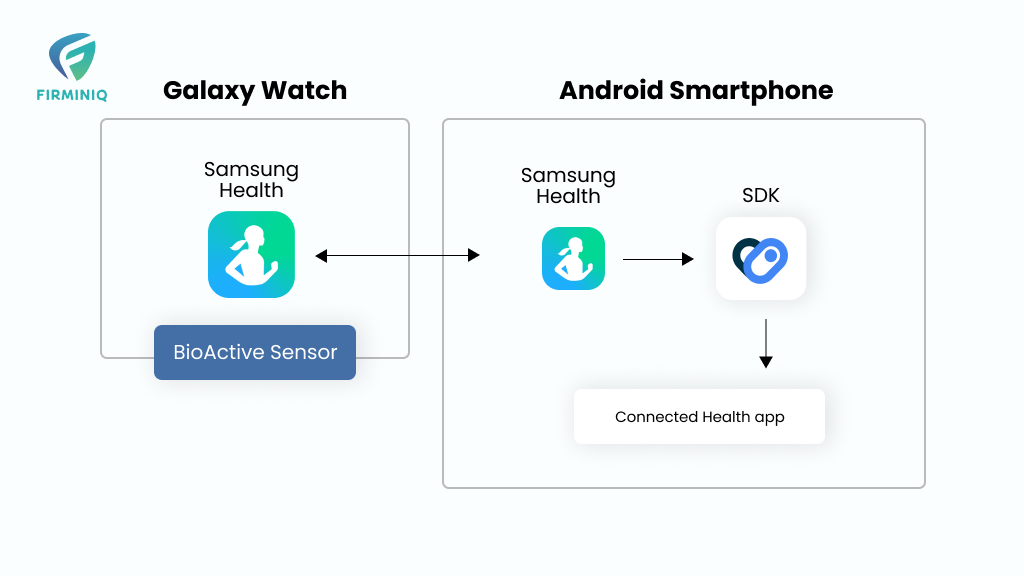Connected health applications enable users to monitor and track their health conditions in real time via connected devices that include wearables, sensors, blood pressure monitors, and more. Physicians can therefore analyze the patient’s condition and offer recommendations accordingly.
As such applications play a critical role in keeping healthcare organizations afloat, quality assurance (QA) becomes one of the key factors that will help deliver excellent quality applications and ensure they work as intended. QA ensures the development of high-quality applications that meet all regulatory requirements and encourages patient safety.
An app that is rigorously and efficiently tested will offer an opportunity for healthcare providers to stay at the forefront of innovation while leaving a positive impression on patient outcomes.
However, poor-quality assurance is one of the major root causes for most of the app failures and the consequences of inappropriate testing can be even more costly.
One of the popular examples of such a failure was an app called Pulse Oximeter. A lot of users learned about the application during the unfortunate time of the pandemic. The app claimed to measure heart rate and blood saturation level using fingerprints via a light and phone camera. “Despite the fact that they have the disclaimer “Not for clinical use,” the app is still considered as a threat, because it may put patients at risk. Imagine if the person with a real health condition (heart failure or other chronic diseases) used it, obtained false results, and took a pill or two from the increased heart rate that was never a case?” – Techreviewer
Therefore, it is so important to plan your QA process prior. Let us discuss all the challenges faced and how adopting the best practices ensures the success of the entire testing process.
Key Challenges Faced During the Healthcare App Testing
Well talking about connected healthcare, there is no room for errors due to the complex nature of the services the app provides. Therefore, testers must be highly skilled and experienced to handle all complexities and offer reliability and quality of the application. Here are some of the key challenges testers usually face:
1. Multiple Phone Models and Connected Devices
There is a continuous increase in connected devices as more smartphones are sold and therefore healthcare apps must work seamlessly with multiple devices and phone models. It is one of the major challenges for testers. With a combination of devices, multiple types of phone models and platforms, and multiple network configurations they need to ensure that the app functions well all the time
2. Multiple Versions of Phone Operating Systems
Ensuring app compatibility with medical devices and phone operating systems is another challenge as every device may work differently. Phones with different versions of OS (Operating System) may have different capabilities. It can impact the app functionality. For example, in Android version 6.0 Bluetooth Low Energy (BLE) scanning only works if the location services are enabled on the phone.
3. Requirement of Actual Physical Devices to Test
Connected healthcare applications require physical devices for analyzing the vitals (including sensors, blood glucose meters, and blood pressure monitors). So here testing on physical devices is necessary to validate the app’s connectivity to the device, data sync with the device, performance, and compatibility.
4. Test with Simulated Changes in Time Zone
Ensuring a standardized time and time zone format is a major challenge and the QA team plays a key role in verifying that the application can display the data correctly, regardless of the time zone. When the user travels with their devices, their time zone changes, and it becomes a challenge for testers to validate and display data according to the user’s time zone
5. Data Sharing with Other Applications
The connected healthcare applications require data sharing with third parties. The data is often complex and diverse, and different systems may use different data formats or standards. The app needs to handle the differences and ensure that only required and approved sensitive patient data is transferred and synchronized with third party apps.
6. Data Validation Across Multiple Systems
Different systems may have different formats, structures, or validation rules, leading to data inconsistencies when exchanged or integrated. These inconsistencies can affect the accuracy and integrity of the data. Ensuring data validity across multiple systems can be a challenging task.
7. Testing in Multiple Network Environments
Whether it is low connectivity, lower bandwidth, high latency, intermittent connectivity, or any network (3G, 4G, and Wi-Fi), the healthcare application needs to work properly in any network condition. Also, different geographical locations may have different network configurations and infrastructure, so testing becomes a challenging task for the QA experts.
8. Usability Testing
Most of the time, connected applications have a complex interface and functionality as they must be tested on a broad range of phones and operating systems. Evaluating the user-friendliness and effectiveness of the app is vital as it should offer ease to the users of any age group using the app.
9. Patient Safety Testing
Patient safety testing involves evaluating the safety of patients as they use devices with the connected health app. Device safety testing involves checking the compatibility of the healthcare app with the medical devices and ensuring that the app does not cause any harm or damage to the patient.
If a connected healthcare app controls a device and malfunctions, it could potentially cause harm to the patient. For example, if you are using a blood pressure app and it malfunctions, say it causes, the cuff to continuously inflate it could potentially damage nerves or tissues of the patient.
10. Security and Privacy Testing
Security and privacy are the most crucial requirements for connected health mobile applications. Also, with the rising cyber-attacks and security breaches, organizations must be extra cautious to avoid such scenarios. Running security tests on mobile applications helps ensure the application is going from the encryption side.
On the other hand, ensuring safe privacy laws especially when personal data is handled is vital. Privacy laws must be implemented to ensure compliance with HIPAA (Health Insurance Portability and Accountability), GDPR (General Data Protection Regulation), CCPA, and more.
Types of Healthcare QA

Best Testing Practices for the Connected Health Applications

1. Plan Efficient Test Strategies
Different devices and operating systems may have unique features and behavior. For building a test strategy, considering the user base, hardware/software requirements, operating system and browser compatibility will help meet the end goal. Here are a few key considerations that help.
a. Consider User base
Checking for the target audience for the app. For example, if the app is designed for a particular geographical area, testing it on devices and OS used in the region will help.
b. Consider the Hardware Specifications of the Phone
Considering different hardware specifications is vital to ensure compatibility between the app and devices. Hardware specifications like RAM size, storage capacity and others affect the app performance. Testing the application on different mobile phones will help ensure that the app is working with a wide range of devices.
c. Consider the OS Compatibility
When it comes to testing an app, it is important to consider a variety of operating systems and platforms to ensure maximum user coverage. Analyzing the user data will help identify the operating systems and platforms that are most used. This will help you prioritize which combinations to test first.
2. Ensure Testing for Boundary Conditions
When the healthcare apps are pushed to the limits, means between extreme ends or two opposite ends, such as its minimums and maximum, testing must ensure no unexpected results and failures.
Test cases data in such a scenario can be generated, both manually and automated. However manual testing can be time-consuming, therefore generating test cases automatically is preferable, especially when the projects are complex.
3. Ensure Testing in Different Environments
Software applications are developed in one environment, but execution takes place in different environments. It may lead to a difference in behavior and performance issues. Therefore, testing in different environments is one of the most efficient strategies that ensure that data is synchronized in real-time.
As the development and test environment varies from the actual production environment, testing in all multiple environments with multiple network conditions will ensure there are no issues, and the application performs as expected.
For example, telehealth platforms that rely on audio and video technology may not work in poor network conditions. It may lead to dropped or frozen calls, which is a major setback in the healthcare app. Similarly, negative testing is important which can help ensure that the software can handle unexpected inputs or actions.
4. Automation Testing is Crucial
Use automated testing tools to streamline the testing process and reduce the risk of human error. Automated testing can also help you to test the application more frequently and efficiently.
5. Consider Usability Testing
Since healthcare applications are used on different browsers, consistent usability is crucial. Any inconsistency in the application may lead to negative feedback and user-experience. So, usability testing allows organizations to gain valuable feedback from the users and make informed decisions thereafter.
The strategy offers valuable feedback and helps reduce development costs by identifying issues prior and early.
6. Safety Testing is Must
Test cases and working with a set of population for usability testing is one of the efficient ways that evaluates the app’s usability. It ensures the app is tested thoroughly, as working with a particular population can help identify the issues that are specific to a certain group.
Crowdsourcing, alpha and beta testing are such techniques that offer ease for usability testing. It involves outsourcing tasks to a large group via online platforms and then the feedback is gathered. Usability issues can be identified easily.
7. Ensure Security Testing
To help organizations with vulnerabilities, discover weaknesses and threats, security testing is done. It refers to performing various tests like penetration, scanning and code analysis that identify all the possible loopholes and protect the application from cyber-attacks.
An organization like NowSecure helps automate your mobile app security testing for free and ensures Open Worldwide Application Security Project (OWASP) top 10 are tested and the app is secure to go.
8. Consider Alpha and Beta Testing with Actual Users
Alpha and beta testing involves engaging a group of actual users in the testing process, that enables the testing teams to gather valuable feedback, identify the errors and improve before the actual release.
Alpha testing involves releasing a preliminary version of software to small groups of users whereas beta testing is the release of a more refined and stable version to a large group of external people. The approach is highly beneficial and iterative that ensures a high-quality product
Conclusion
When it comes to healthcare, producing very high-quality products not only helps achieve a winning position, but also makes it easier to be used by healthcare professionals and patients.
Functional testing, security testing, performance testing, device testing, compliance testing, user experience testing, all are vital to ensure that the applications deployed are reliable, secure, and user-friendly. At FIRMINIQ we help healthcare providers with our best strategies for quality assurance and make your app intuitive and secure. Reach out to us for the best end-to-end quality engineering services.






